Drawn to New York City in the 1950s and 60s, dancers, musicians, writers, actors and visual artists found little about their prevailing artistic elders that spoke to them, so they started speaking to each other. In coffee houses and cafes, dancers found visual artists and writers asking similar questions and began exploring answers in ways that crossed traditional artistic borders as dancers spoke as well as moved as part of their performances and some visual artists injected movement as an element of art installations. Conceptualism in mid-century art for dancers incubated in Manhattan’s Judson Church and the venue eventually became shorthand for what is known as postmodern dance.
Primarily based on the East Coast, some proponents including Anna Halprin, Rudy Perez and Simone Forti relocated to California, expanding the reach of postmodern dance and conceptualism to the West Coast.

A riveting performer whose minimalist, often improvisational dance is informed by her extensive writing and sketching, Forti’s archive has found a new home at the Getty Research Institute (GRI). The trove includes journals, notebooks, family documents, sketches, photographs, correspondence, posters and audio-visual material.
”Forti’s archive greatly enhances the research opportunities for anyone studying major art movements in the latter part of the 20th century,” Mary Miller, Director of the GRI commented in announcing the acquisition.
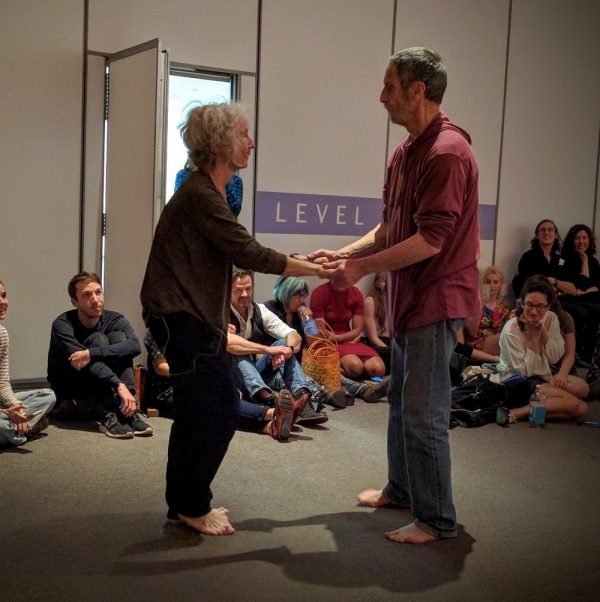
The Forti archive is the most recent Getty acquisition focused on the Judson Church generation of experimental dancemakers exploring minimalism, Fluxus, conceptualism and arte povera. Forti’s material joins archives from David Tudor, the Kitchen, and Yvonne Rainer.
At the time the Judson Church collective was changing the course of dance, Forti and those contemporaries were unaware their explorations would become game changing, let alone archival.
“When I was in my 20s, we were asking some basic questions, not just dancers, but visual artists and writers too. What are we doing? Why do we do it? What forms can it take? In dance, we found we were not looking at our ancestors and our work had to be more conceptional because there wasn’t a format that we could fill. We had to invent what the format would be whether that be for painting or language or movement.”
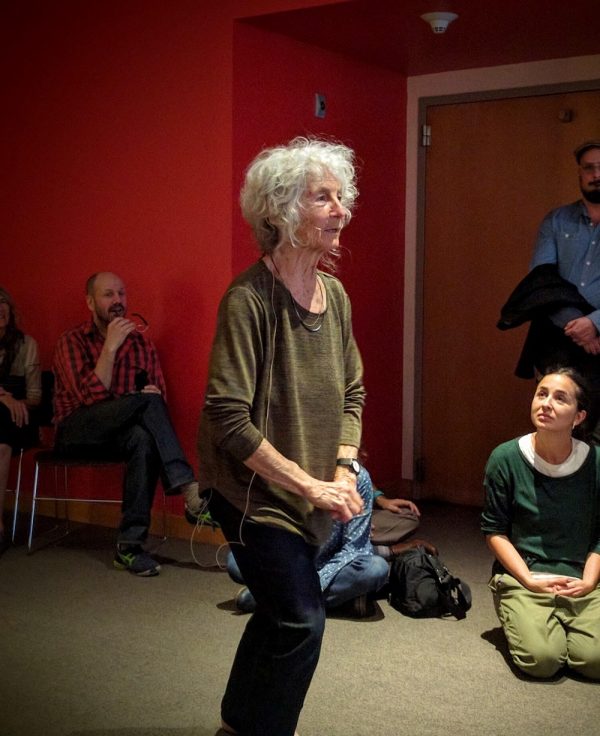
While Forti’s material now will undergo an additional period of cataloguing and digitizing by the GRI, that will be just the latest effort in a process that began eight years ago when Glen Philips, the GRI head of modern and contemporary collections approached Forti and Mara McCarthy of Box Gallery which has long represented Forti’s artistic endeavors. Forti described an initial meeting as having moments where she found herself rather uncharacteristically self consciousness.
“The Getty had recently acquired Yvonne Rainer’s archives and Glen thought mine would fit in with Yvonne and other acquisitions. One day I brought out a lot of my notebooks. Glen and Mara spent hours reading through them. Every once in a while one or the other would chuckle. I sat there watching and feeling rather funny. At the end, Glen told me he thought my work would fit well with other collections, and then it began,” Forti recalled.
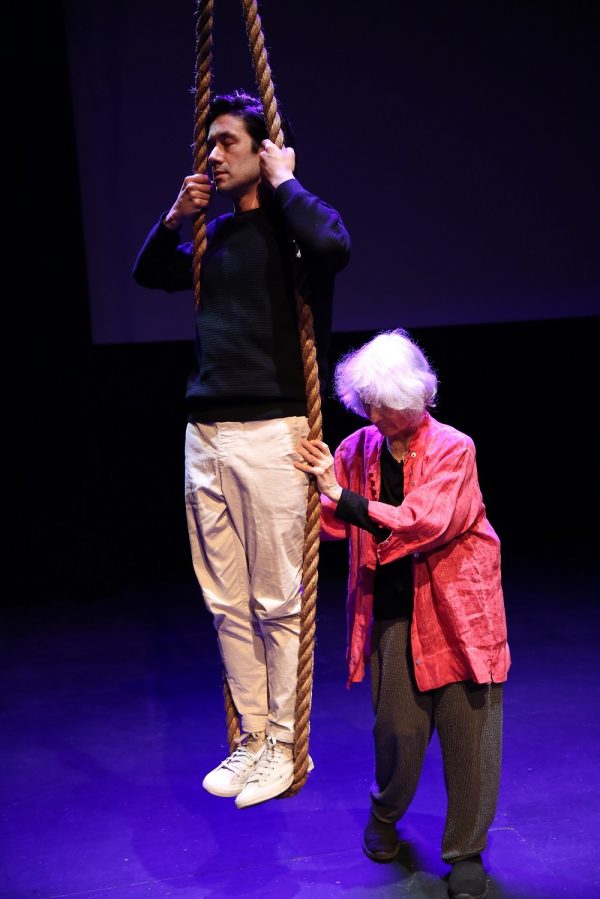
That session launched a three year preparation period to assemble and list what could be included in such an acquisition. Two assistants devoted one day a week over those years to sort, identify and organize decades of material. With help from the software program ArtBase, Forti’s photographs, posters, performance programs, announcements and other materials were entered and cross referenced. The proposed acquisition then made its way through the GRI review process to the recent announcement of the final approval by the Getty acquisitions committee. Forti emphasized that without the structure of the Box Gallery, the preparatory work and the acquisition would not have happened. She and the gallery are sharing the Getty funds from the acquisition.
Throughout that eight year incubation period, Philips was certain the potential acquisition would be a significant addition to the GRI.
“Since the creation of her Dance Constructions in 1960-61, Forti has been a seminal figure in the art world, with a practice that was influential on the development of Minimalism and on Judson Dance Theater, to name two examples,” Philips explained. “The GRI archives strongly cover the development of avant-garde art, dance, music, and performance in the 1960 and 70s forward. This includes the existing archives of figures and institutions like Yvonne Rainer, David Tudor, and The Kitchen.”
Forti has exhibited, performed and taught workshops worldwide, including performances at the Louvre in Paris, the Museum of Modern Art (MOMA) in New York, and at the J. Paul Getty Museum in LA. Forti already has been the subject of major exhibitions and museum shows throughout the U.S. and Europe, most recently at the New York City’s Museum of Modern Art (Judson Dance Theater: The Work is Never Done) and Museum der Moderne Salzburg (Simone Forti: Thinking with the Body). Her seminal 1961 body of work titled Dance Constructions and the early Fluxus movement have influenced other artists. She has works in the permanent collections at MOMA in New York, the Stedelijk Museum in Amsterdam among others. Recently her LA performance at REDCAT showcased her musical compositions, often on invented instruments.
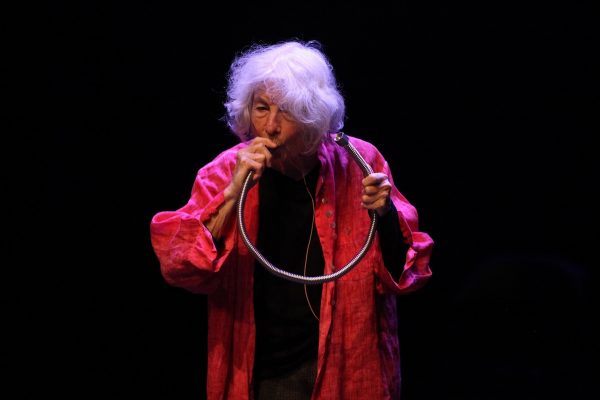
Asked why she and the other Judson Church artists are significant, Forti emphasized that while not a historian, she has an opinion. “Judson Church is part of a strand of western art culture that emerged between the world wars with Dada and Marcel Duchamp in Europe and in the U.S. at North Carolina’s Black Mountain College. I think that’s of interest.”
Forti continues to pursue her writing, art, composition and performance, but she doesn’t see that much difference between a writing she makes and a performance she does. “In fact when I’m working on an idea, I’m moving and I’m writing and I’m drawing. Movement has been the central thing all my life, but that is changing,” she admits, “I don’t have the same kind of lust to be moving anymore. I’m creaking a bit, and at 84, I’d rather be writing.”
LA-based choreographer Sarah Swenson who has collaborated with Forti for many years regards her as “a national treasure” and commented on the irony of a permanent archive for an artist not given to dwelling on the past.
“Simone seemed to quite willingly pack up all her things and ship them off without sorrow or sentimentality, including some very old pictures of her and Bob Morris when they were so very young. I credit her lifelong habit of staying in the present for this enviable quality,” Swenson said. “We are so fortunate that a lifetime’s worth of her writings and sketches, especially the notebooks and diaries, will be available forever for us to absorb and to enrich us.”
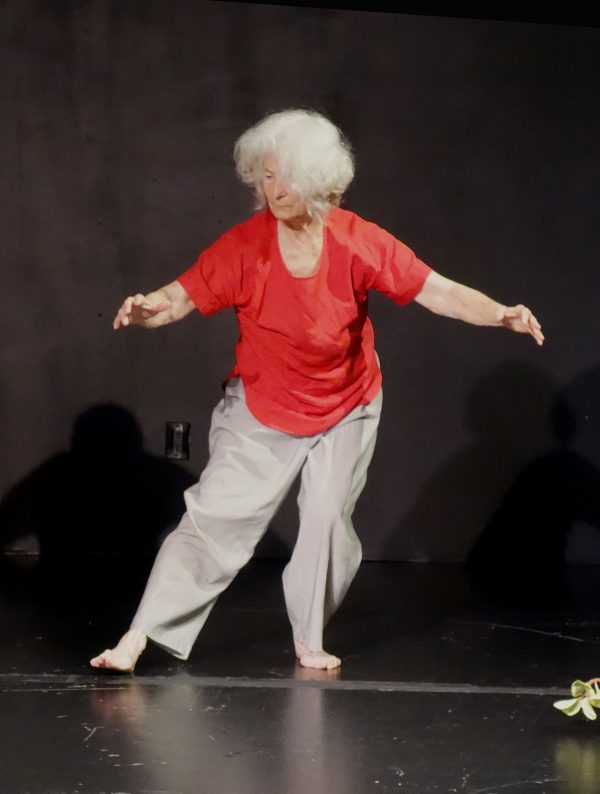
The public and outside researchers will have to wait a while longer to view the archive until GRI curators fully catalogue and digitize the extensive cache. After the Yvonne Rainer archive was acquired and catalogued, the GRI showcased the material in a riveting exhibition that included rare video of Rainer and other Judson Church figures performing as well as displays of written material, costumes and artwork. Philips said no performance or exhibition is on Getty’s calendar yet, but future projects may develop similar to the Rainer exhibit and possibly with a performance component.
Here are links to LA Dance Chronicle reviews of Simone Forti performances over the past few years:
https://www.ladancechronicle.com/performance-master-simone-forti-is-still-radical-at-84/
https://www.ladancechronicle.com/simone-forti-carmela-hermann-dietrich-together-again-at-highways/
https://www.ladancechronicle.com/a-conversation-between-steve-paxton-and-simone-forti-at-redcat/
